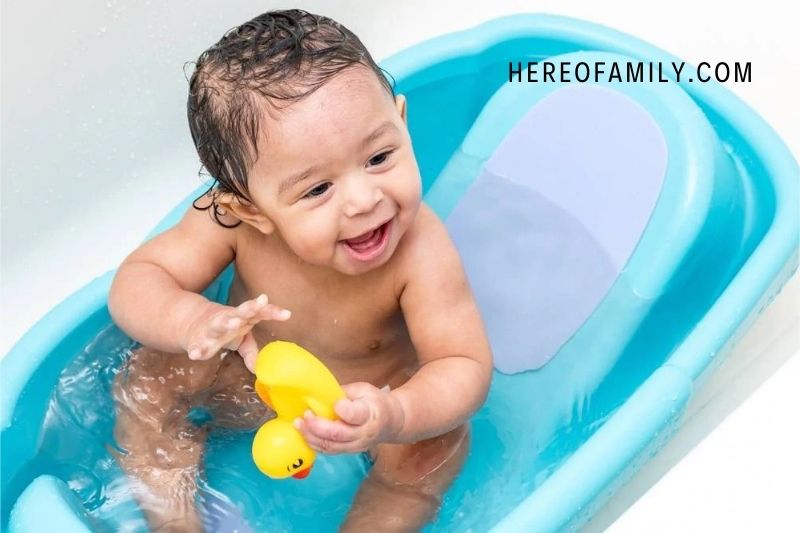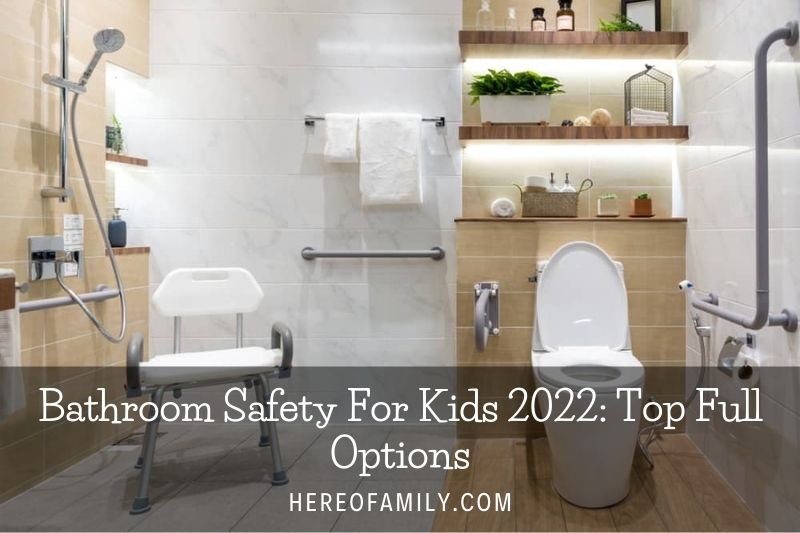Bathroom safety for kids is important for all ages. When making your bathroom safe for kids, consider many things, such as keeping cleaning products out of reach, using non-slip mats in the tub and around the sink, and installing child-proof locks on cabinets and doors. By taking these simple steps, you can help keep your kids safe from harm in the bathroom.
Contents
Simple Tips to Childproof Your Bathroom & Prevent Injuries

Children may drown in only a few inches of water, so never leave a small kid alone in the bath for more than a few minutes. If you can’t ignore the doorbell or the phone, wrap your youngster in a towel and bring him with you when you answer them.
Bath chairs and rings are intended to be bathing aids and will not protect a kid from drowning if left alone. When not in use, never leave water in the bathtub. It’s also a good idea to get everything you believe you’ll need within arm’s reach before getting started. For a list of items, see Preparing Your Baby’s Bathing Area.
Slips and falls: Put no-slip strips on the bathtub’s bottom. Cover the water faucet with a cushioned cover, so your kid does not get wounded if he knocks his head against it. Make it a habit to close the toilet lid and invest in a toilet lid lock. When a curious child attempts to play in the water, he may lose balance and fall in.
Set your water heater to a maximum temperature of 120 degrees Fahrenheit at the faucet (48.9 degrees Celsius) to avoid scorching. Check the water temperature with your wrist or elbow to ensure warm, not hot. When your youngster is old enough to operate the taps, instruct him to turn on the cold water first, followed by the hot.
Storage of medications and toiletries: Keep all medications in containers with safety caps. However, keep in mind that these caps are child-resistant rather than childproof, so keep any medications and cosmetics high and out of reach in a locked cabinet: store toothpaste, soaps, shampoos, and other regularly used goods in separate cabinets. Instead, please keep them in a high-access cabinet with a safety latch or locks.
If you use electrical appliances in the bathroom, especially hair dryers and razors, be careful to disconnect them and place them in a cabinet with a safety lock when not in use. It is preferable to use them in a different room without water. An electrician may install special bathroom wall outlets (ground-fault circuit interrupters) to reduce the risk of electrical damage if equipment falls into the sink or bathwater.
Bathroom Safety For Kids: 7 Things Parents Need To Keep In Mind

1. Organise the bathroom
Your youngster may play with potentially hazardous materials in the bathroom. As a result, keep bath supplies in a basket. Toxic goods should be secured from your child’s reach in a cabinet.
2. Don’t leave the bathroom too often
Limit your visits out of the room to ensure you can keep an eye on your youngster while they are in the restroom. Prepare all of your materials ahead of time, so you don’t have to leave the youngster alone.
3. Check the water temperature
Children are naturally curious, and they may wind up putting their fingers into the bathwater. Check the water temperature to ensure it is not too hot for your youngster.
4. Place anti-skid strips
Slipping on the floor will be reduced by anti-skid strips. Keep the bathroom floor as dry as possible.
5. Put toilet lids down
Keep the toilet lid down or sealed to avoid the risk of slipping or falling, especially if you leave your child unattended.
6. Switch off electronics
Electronics in the bathroom, such as blow dryers or irons, should be disconnected.
7. Don’t lock the bathroom
When your youngster is inside, leave the bathroom door open. If your child locks himself in the bathroom, make sure the bathroom door lock can also be opened outside.
Water Accidents in the Bathroom
Toddlers may be unaware of how top-heavy they are, and young toddlers may not understand how their imagination may cause serious harm if tested in the restroom.
What youngsters often discover much too late is that water is wet, soap is slick, and bathtub safety is no laughing matter.
Bumping heads, burning oneself, and even drowning are horrible concepts to fathom, yet they are very feasible and on the increase.
Some relevant posts:
- Does Baby Powder Cause Cancer? Complete Guide 2023
- Best Baby Breathing Monitor: Keep Baby Safe and Sound 2023
- Is Wifi Safe For Babies? Top Full Guide 2023
- How To Help Choking Baby? Top Full Guide [2022]
- Check Neighborhood Safety 2023: Top Full Guide
- Is Daycare Safe For Infants 2023? Top Full Options Here!
- Where To Put Baby Monitor? Top Full Guide [2022]
- When Should You Babyproof Your House? Top Full Guide 2023
Conclusion
As parents, we are always looking for ways to keep our children safe. One area that is often overlooked is bathroom safety. Here are some tips to help keep your kids safe in the bathroom. Thanks for reading.
